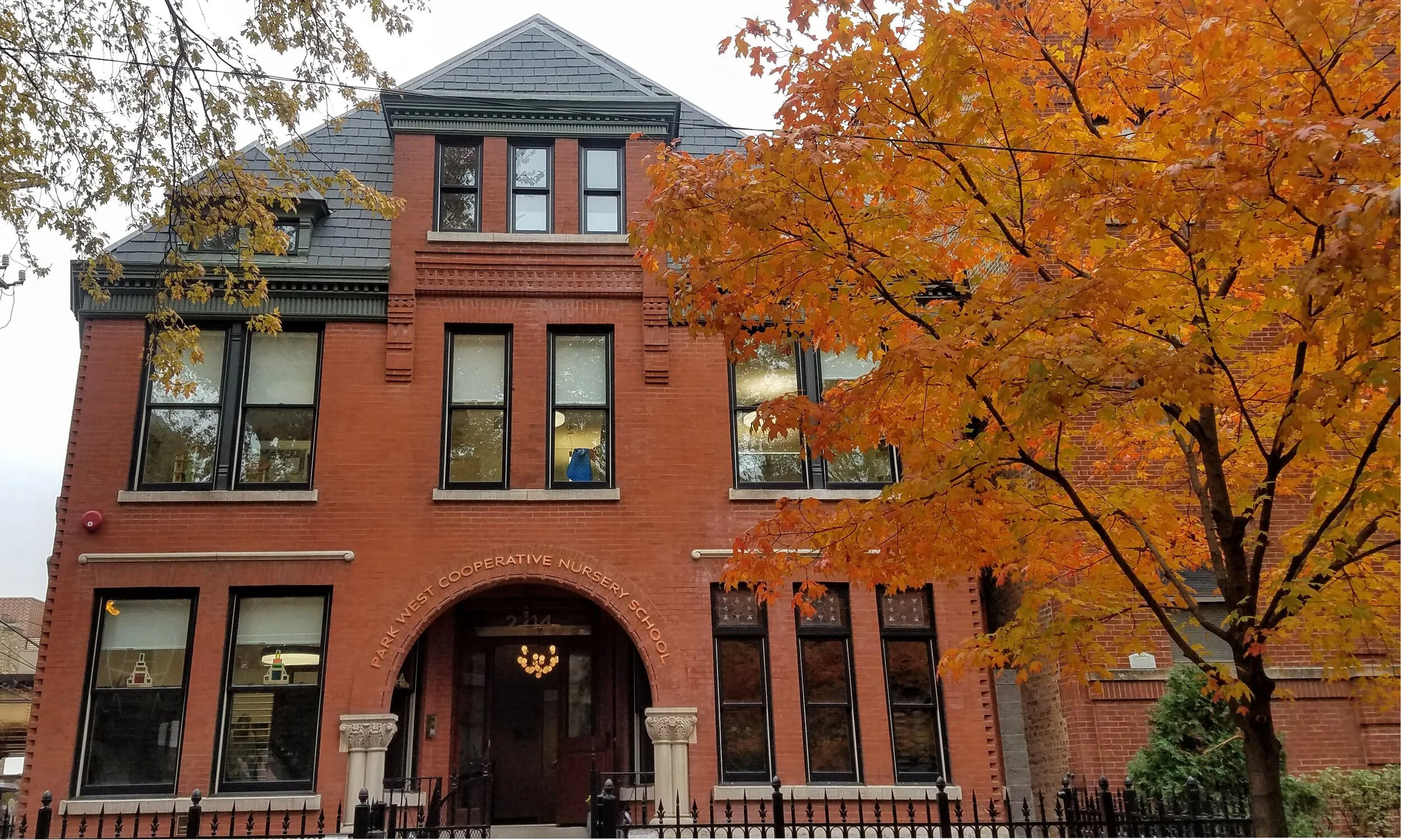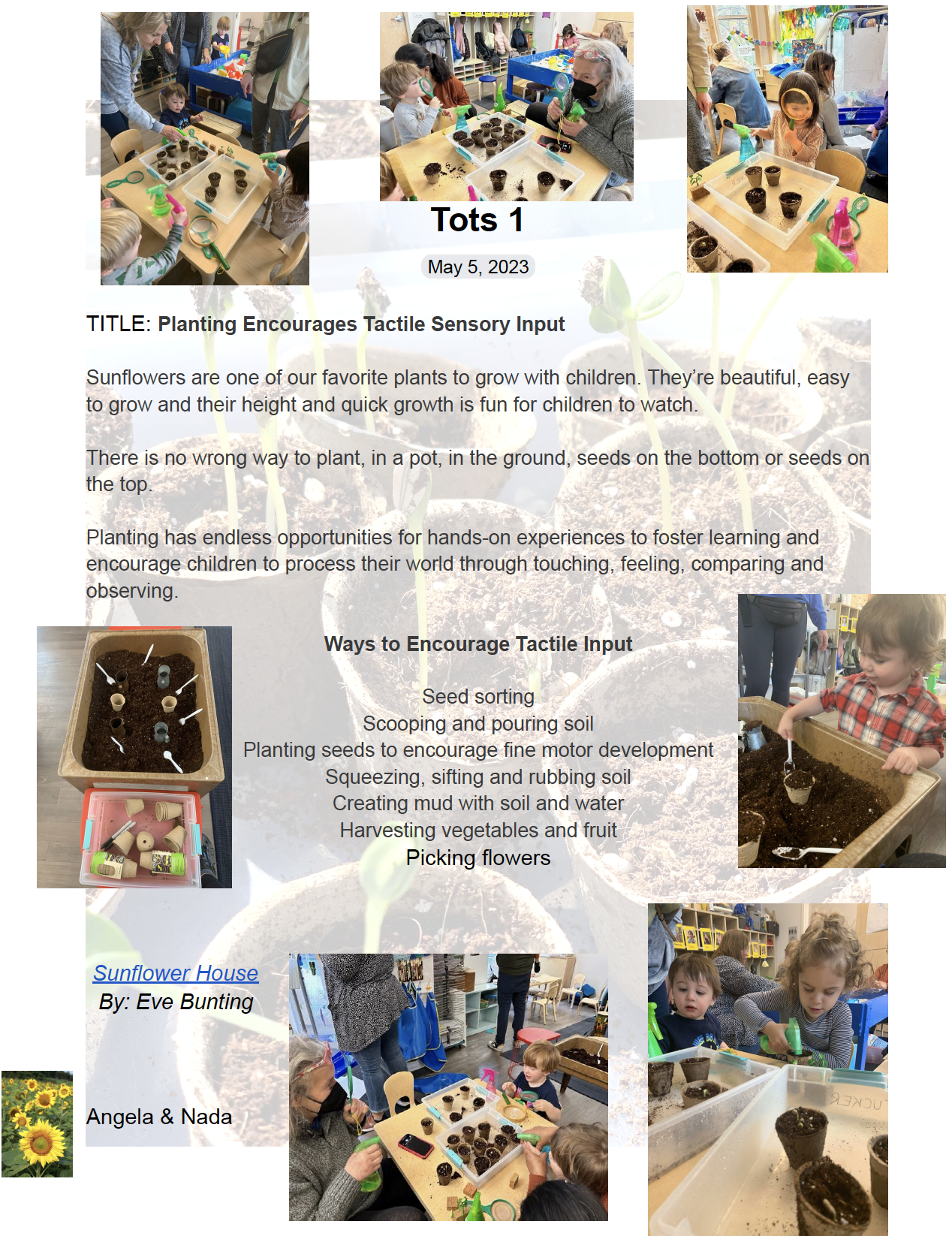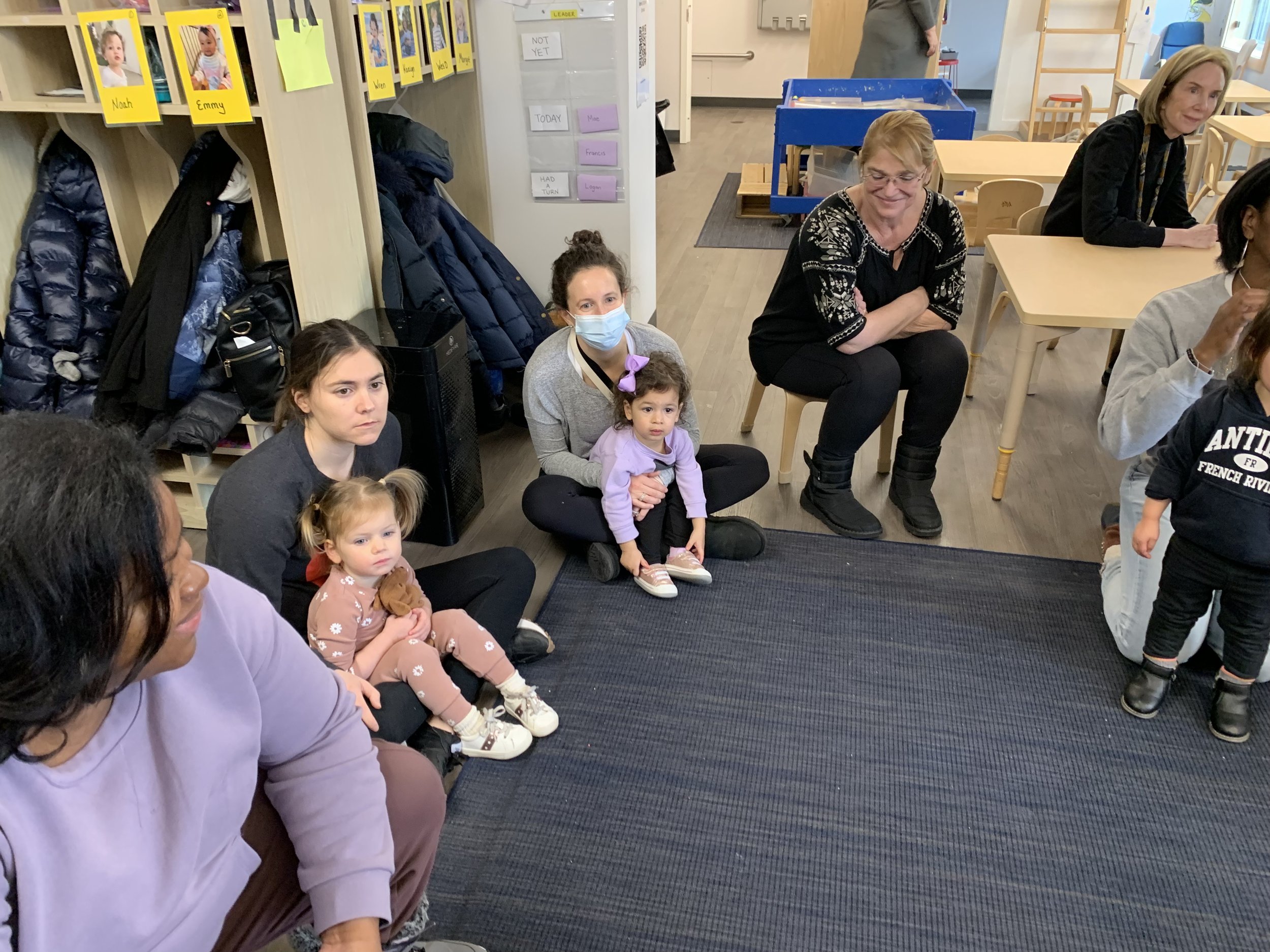Boundary Setting and Consent
At our staff meeting last week we discussed a recent document released by the Chicago Public Health Department that focuses on boundary setting and consent for children of all ages including those in their early childhood years. We found that the language and approach described in the document reflects the way we communicate and work with students at Park West. We thought it would be informative and helpful to share the document with you. Please find it here.
For children enrolled in our Parent-Toddler classes, we recognize that this is likely their first experience in a school environment, and possibly their first time that they are navigating a situation with this level of structure and the presence of similarly aged peers outside of their family. With the security of a present parent or caregiver, we want children to feel safe with teachers, and we also want to provide students with the tools to make their own environment a safe and comfortable one for themselves by setting boundaries and advocating for themselves. Teaching children the words they can use when they want another kid's action to stop, whether it’s a classmate taking a toy, offering a hug or hitting, is one way we help students advocate for themselves and set boundaries with others. We might say to a child You can say No or Stop if you don’t like what ______ is doing. Being at such an early stage of their language development, sometimes children aren’t ready to use those words on their own. In those situations, a teacher can help in a variety of ways depending on what actually happened including modeling the language and saying the words for the child.
Teachers can also help seek consent from a child during play. It looks like ______ wants to put their car on the road you built. Is that ok? Or It looks like ______ wants to touch the sparkles on your shirt. Can they do that? We also prompt kids who are seeking the interaction to do the asking as well. You can ask _____ if you can put your car on the road they built. Throughout these back and forths, we hope to normalize setting boundaries as well as giving children the tools for how to do it.
As teachers we are mindful of the power differential between us and the students we teach. We want children to feel as safe as possible and to be able to practice as much autonomy as they are able. When a child needs to use the bathroom, for example, we have a number of questions we may ask a child: Do you need help? A child may let us know what kind of help they need in the bathroom, and if they don’t, we’ll ask. Do you want me to help pull your pants down? If they don’t respond, and they don’t pull their own pants down, we’ll let them know we will help. It looks like you need help with your pants. I can help you. We want to make sure children know what to anticipate from an adult and give them opportunities to voice what they need from us.
We also pay attention to what comforts children. There are some children who do respond well to a hug if they’re missing a parent or if they got a bump or hurt in some way. There are also children who just need a quiet moment to recover and don’t want physical comfort. We take note of those children and make sure they have a book to look at if they’re sad or a quiet spot to sit until they feel better.
If there are times, and there are, when a teacher needs to help a child stop an action after asking them to stop, we will let that child know I’m going to help you now and remove them from the situation. Again, it’s helping children anticipate a teacher’s behavior in our effort to both keep that child safe as well as those around them, depending on the circumstance.
Our main goal is to help children begin to understand how to set boundaries with others and seek consent as well. In the Parent-Toddler classes, we look for opportunities to introduce these ideas in ways that are simple and age appropriate. It’s a first step in building a foundation for these children’s ability to communicate clearly as a means of self-advocacy.
We were reassured by the approach taken by the Chicago Public Health Department. We hope you have a chance to take a look at the document they released this month as this is an important topic for families to address with children throughout their lives.
Painting with Water
Upcoming Snack Calendar:
Is it really painting? Yes!
What is painting with water? It is simply the same process of painting with paint except that the sponges, brushes and other materials are dipped into water and the painting disappears as it goes through the drying process.
Developmental benefits:
Pre-writing
Gross motor skills
Fine motor skills
Vocabulary building
Crossing the midline
This is a simple sensory activity that focuses on the experience, process and not the product. It is open ended allowing children to choose what materials to use and the process in which to use them.
What will I need?
Tools to paint with
Sponges: kitchen, bath, shaped art brushes…
Brushes: different sizes and textures….
Cotton balls
Paint Rollers
Other Open ended materials…….
Containers for Water
Trays
Spray bottles
Cups
Open ended
Surfaces to paint on
Walls,
Sidewalks
Easels
Tissue paper
Water Canvas
Open ended
Over the past few weeks we have used this water canvas in the classroom.
Enjoy the photos!
Nada & Angela
Emotional Refueling
Upcoming Snack Calendar:
Have you noticed, as we have, that your children are beginning to get much more comfortable at school?
As your children become more comfortable in class they may begin to leave you behind while you finish a conversation with another parent or caregiver. They may not want you to hover, or help them with the glue, and they may begin to seek out a special someone to play beside. You may also notice that even while they run to the next activity with confidence, and happily leave you behind, they will often come back to find you (emotional refueling), sometimes with a degree of anxiousness. They are branching out, yes. But they still may need a hand to hold, or a leg to cling to for safety, to recharge and feel back at home. Having a caregiver close by allows a child to feel safe and secure while they are off exploring new and uncharted waters.
Sensory Play
Click below to download the Tots 1 Snack Calendar for easier viewing alongside your personal calendar:
Gym Time
Toddlers are on the move. They are learning to crawl, walk, jump, run, climb, use stairs, and throw a ball.
Our gym is set up to allow toddlers to explore the gym in their own way. We offer a space where your child can crawl (on the mats and floor) climb (over wooden play structures and climbing wall) jump (onto the giant pillows/mats), play with balls (throw, catch and roll), push toys (walking) in addition to offering bikes and other toys. With development in mind, we are designing spaces where your children can practice the skills that are emerging for toddlers and we offer a range of opportunities to meet each child where they are in their development. Do you have any questions about how your child is developing? Melissa, our school director, is always happy to chat with you as you work to understand your child and give them what they need to thrive! melissa@parkwestcoop.org
More is happening in the gym than just playing.
They are working on balance, coordination, strength, learning social, language and negotiation skills…..
Please enjoy the photos of some of our time in the gym. These photos are meant for your family please do not share them.
Best,
Angela and Nada
A Glimpse Into Our Classroom
Each week we create a classroom environment with the goal of inviting your child to explore the materials and perhaps engage in new experiences. Each week we will strive to create a space for self-discovery with varied opportunities.
When teachers set up the classroom, we try to look at it from a perspective of being 34” tall. Toddlers physically see things differently than older children and adults. They also take in information differently based on their developmental stage. As teachers plan, we think about classroom play, art, water table, sand table, rug objects time. We choose activities and objects that support and stimulate children’s learning and growth.
Most toddlers express their ideas non-verbally or with few words. We are observing and looking for their important ideas.
We may offer some activities more than once. When a child approaches an activity or object a second time, they might manipulate or explore it differently, drawing on that previous experience. If we see that many children are interested in a certain kind of play we will offer
those objects again. While observing children we may notice that someone is hesitant about a certain type of activity. We may offer a similar activity the following week to provide an opportunity for that child to participate. When we notice that a child has a particular interest, we will provide an activity to support the child’s natural curiosity.
The following are some activities that we have offered to support your child’s development: building blocks, baby dolls, shape blocks, puzzles, trains, musical instruments, small animals, and people, drawing tools, painting tools, stamps, kinetic sand, funnels, pouring, sand table, water table, shaving cream, finger painting, etc.
Enjoy the photos! Click here to view them.
These photos are only for the families that are enrolled in the class. Please do not share.
Best,
Angela and Nada

























